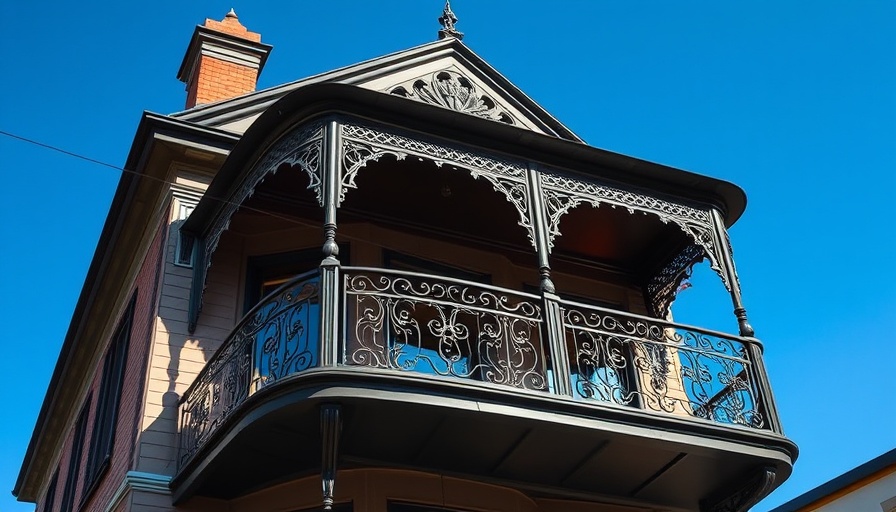
The Charm of Widow’s Walks in Coastal Architecture
As you stroll through historic towns along the Eastern Seaboard, particularly in New England, you can’t help but be captivated by the elegant houses adorned with widow’s walks. These architectural features—railed platforms crowning 19th-century homes—are not merely aesthetic; they tell a fascinating story that intertwines maritime heritage with social status. Originating from the needs of seafaring communities, widow’s walks serve both practical and symbolic purposes, making them a noteworthy topic in the realm of real estate.
Understanding the Origins and Symbolism
Often romanticized as spaces where sailors' wives waited anxiously for the return of their husbands, widow’s walks are steeped in both history and legend. In the 19th century, these rooftop lookouts were not just spots for anxious waiting; they were also a declaration of wealth and privilege. Families of seafaring captains utilized these platforms to enjoy panoramic views of ship movements while simultaneously allowing easy access to chimneys, essential for heating and cooking. This dual purpose adds a layer of significance to these structures, illustrating how architectural design responded to the needs of its inhabitants.
Modern Interpretations and Design Trends
Today, the tradition of incorporating widow’s walks continues, although in a more modern context. While new construction houses may not feature them with the same frequency, upscale coastal properties are increasingly adopting widow's walks as a means of blending historical charm with contemporary luxuries. Architects are reimagining these spaces, introducing sleek lines and materials like glass railings, turning the widow’s walk into a stylish observation point while ensuring they meet modern safety standards.
The Value of Restoration and Real Estate Appeal
For homeowners looking to restore a historic widow’s walk, there are significant implications for property value and marketability. Depending on location, restoring these features can dramatically enhance both the home’s curb appeal and its overall market value. Homes with these charming details often invoke curiosity and admiration, giving real estate agents an additional selling point. Properties across platforms like Zillow, Redfin, and Trulia can spotlight this historical architecture to attract buyers interested not just in luxury real estate, but also in a piece of architectural history.
Considerations for Potential Home Buyers
When navigating the real estate market, especially in coastal regions, understanding the implications of widow’s walks can inform potential buyers. While they add character and charm, buyers should also acknowledge the associated maintenance and safety considerations that come with restoring or living in such homes. Engaging with a knowledgeable realtor or real estate expert who specializes in historic properties can provide insight into the market trends, appraisal values, and maintenance challenges related to these unique architectural features.
Final Thoughts: The Allure of Coastal Living
The lingering charm of widow’s walks lies in their ability to connect us to the past while offering a modern twist on outdoor living. For homebuyers, they symbolize both a romantic ideal and a potential investment, encapsulated in a space perfect for drinking coffee or enjoying the sunset. If you're house hunting in coastal areas, don’t overlook the allure of these unique features. With their rich heritage and expanding popularity in luxury real estate, widow’s walks might just be the perfect accent to your future home.
 Add Row
Add Row  Add
Add 




Write A Comment